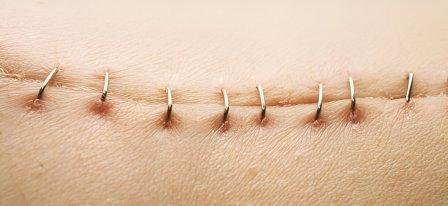Wound healing is a complex and vital process that the body initiates after an injury. While minor cuts and scrapes often heal without much intervention, chronic or severe wounds—like diabetic ulcers, pressure sores, and surgical wounds—require specialized care. Fortunately, with advancements in medical technology and research, a wide range of advanced wound healing treatments are now available. These cutting-edge therapies not only speed up recovery but also reduce complications, lower infection risk, and improve overall outcomes for patients.
Understanding Advanced Wound Care
Advanced wound healing goes beyond traditional methods like basic cleaning and dressing. It involves a multidisciplinary approach, often combining modern materials, biological agents, and innovative techniques to promote faster and more effective healing. These treatments are typically used when wounds fail to heal within a standard timeframe or when they become complicated due to underlying conditions such as diabetes, poor circulation, or immune disorders.
Key Advanced Wound Healing Treatments
- Negative Pressure Wound Therapy (NPWT)
Also known as wound vac therapy, NPWT involves applying controlled suction to the wound through a sealed dressing. This technique removes excess fluid, reduces swelling, and helps draw the edges of the wound together. It also promotes the growth of new tissue and enhances blood flow to the area. NPWT is widely used for post-surgical wounds, traumatic injuries, and chronic ulcers. - Bioengineered Skin Substitutes
These are lab-created materials that mimic the skin’s natural structure and function. They are especially helpful for wounds that don’t respond to traditional treatments. These skin substitutes may contain living cells, growth factors, or scaffolding materials that encourage new skin growth. Products like Apligraf and Dermagraft are commonly used to treat diabetic foot ulcers and venous leg ulcers. - Hyperbaric Oxygen Therapy (HBOT)
In this treatment, patients breathe 100% oxygen inside a pressurized chamber. The high oxygen concentration helps improve the function of white blood cells, boosts collagen production, and stimulates blood vessel formation. HBOT is particularly effective in treating wounds with poor blood supply, radiation injuries, and chronic infections. - Growth Factors and Cytokine Therapy
Growth factors are proteins that play a crucial role in cell proliferation and tissue repair. In wound healing, applying growth factors directly to the site can enhance cellular activity and speed up regeneration. Some advanced dressings are infused with these biological agents, allowing targeted delivery to the wound. - Advanced Dressings
Modern wound dressings are far more than just gauze and tape. They are engineered to maintain a moist healing environment, prevent infection, and sometimes even release healing agents. Examples include hydrocolloids, alginates, hydrogel dressings, and antimicrobial silver dressings. These dressings are selected based on the wound’s stage, type, and level of exudate.
The Role of Personalized Care
One of the most exciting aspects of advanced wound healing is its move toward personalized treatment. By analyzing the patient’s overall health, wound type, and healing progress, clinicians can tailor a treatment plan that offers the best chance of recovery. This individualized approach ensures that patients not only heal faster but also experience fewer setbacks.
Conclusion
Advanced wound healing treatments have revolutionized how we care for complex wounds. With the integration of technology, biotechnology, and innovative therapies, patients now have access to more effective and less invasive options. These treatments not only enhance healing but also significantly improve the quality of life for individuals suffering from chronic or non-healing wounds. As research continues to push boundaries, the future of wound care looks increasingly promising, offering hope and healing to more patients than ever before.


No responses yet